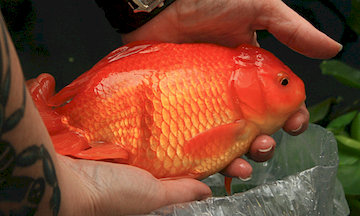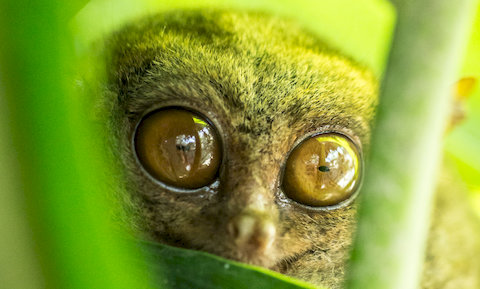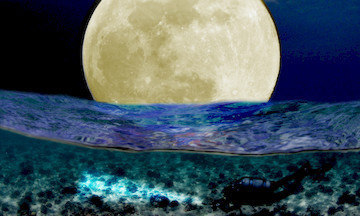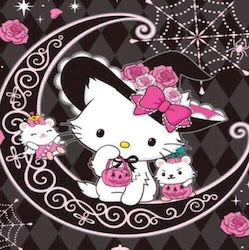Goldfish Myths and Facts
Everyone knows the Goldfish as a common freshwater housepet and often left alone in a fishbowl. It is a common belief that by the time the fish has circled the bowl, it has forgotten doing so. This is why people think goldfishes only have a 3-second memory.
The fact is that Goldfishes can surprise you as they are smarter than you think! They are the most studied fishes for reasons.
On this week's blog, we reveal the myths, facts, and hidden powers of the goldfish!
About the memory of the goldfish
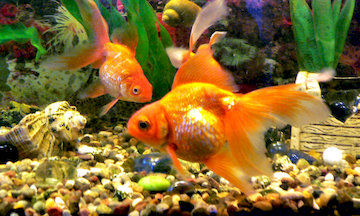
Myth: Goldfishes Have a Three-Second Memory
The myth about goldfishes having a memory of only three seconds is the most common misconception about the fish. It is a typical joke that the reason why the goldfish keeps circling their bowl is that it always forgets doing so. The three-second memory myth is also related to the misconception that fish bowls are the ideal home for them.
Fact: Goldfishes Can Hold Memories Up to Five Months
Goldfishes have a memory span of up to five months! In fact, they can remember their owner, routines, tricks, and have a sense of time. After three to five months, the fish can no longer recognize people and things that don't come around often. However, they won't forget their owners and constant things as long as it will remain the same.
In fact, goldfishes and other fishes are capable of learning, retaining the information, and recalling and acting on it a few months later. They can learn tricks like fetching or swimming through finger hoops. Other fishes like the carp, can distinguish different music styles and remember complicated routes in a natural environment setting.
The Goldfish in a fishbowl
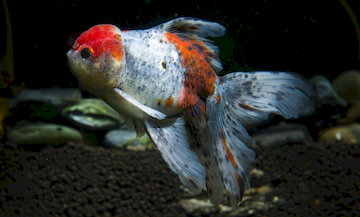
Myth: The Goldfish Can Be Kept in a Bowl
This myth is not true, and it is not a good option either. Goldfishes are the type of fish that create a lot of waste, eat a lot and tend to be messy. Keeping them in a bowl can reduce their lifespan and cease their growth. The goldfish can survive in harsh conditions, but keeping them in a bowl with no proper filtration and aeration will not make them happy nor healthy.
Fact: The Goldfish Should Live in a Fish Tank
Goldfishes eat a lot and tend to create a lot of waste, that is why a fishbowl is not a healthy home for the fish. They should be in a big aquarium with proper filtration, aeration, and water volume. The aquarium or fish tank should have enough space for them to grow, swim, breathe, sleep, and eat.
A common goldfish can grow up to 45 centimeters (18 inches), so it would be best to keep them in a fish pond. But if you really want to keep it in an aquarium, make sure it is large enough to store 200 liters of water or more. Getting to know goldfishes can help you in understanding how to let them mature healthily and adequately.
Goldfish has short lifespan
Myth: The Goldfish Don't Live Long
This myth most likely came from premature deaths due to unsuitable living conditions. Goldfishes don't die quickly because of their short lifespans, but because of improper care. If they are kept in bowls with no proper filtration and aeration, the fish will eventually be poisoned by their water.
Fact: The Goldfish is a Long-term Pet
Just like getting a dog or a cat, the goldfish is a long-term commitment. When goldfishes are taken cared of properly, they can live for more than ten years. The oldest record of a goldfish is 49 years old! They are a sensitive fish that require certain conditions to live long. If you can no longer take care of your fish, NEVER throw it in the river or a creek!
It is not doing them a favor by releasing them into the wild. Chances are, the goldfish will survive, and it will overpopulate fast, leading to ecological imbalance, as a matter of fact they are considered as an invasive species. They also swim along the bottom which can uproot vegetation and release minerals that trigger excess algal growth. They can also carry parasites and exotic diseases.
The best and safest way to get rid of your swimming pet is to give it to a responsible pet store or an aquarium hobbyist. If your goldfish is sick or dying, the most humane way to end its life is to lay it down in an ice slurry. Do not flush it in your toilet bowl! It may still survive and end up in the wild.
Goldfish diet
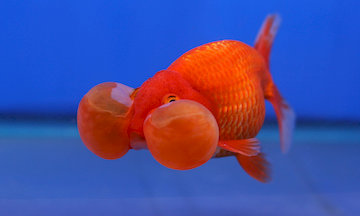
Myth: Goldfishes are Herbivores
This myth was likely created because goldfishes are often seen nibbling on the aquatic plants and because they don't have visible teeth. Goldfishes are omnivores which means they can eat both plant and animal matter. And they actually do have teeth! It is called Pharyngeal teeth, and it is located near the back of their throat.
Fact: Goldfishes are Omnivores
Goldfishes like to scavenge, and while they do enjoy eating plants, they have no problem eating insects, brine-shrimps, mealworms, and mosquito larvae. Wild goldfishes like to eat smaller invertebrates, fish eggs, and smaller fishes. A good diet for them involves both animal and plant substances. Store-bought pet food for goldfishes includes both of this matter.
Their teeth do fall out too, just like sharks. But don't worry, it is not sharp enough to bite on human flesh. Aside from the edible aquarium plants, like duckweed and anacharis, the goldfish would happily munch on cucumber, romaine lettuce, carrots, and peas. These fishes are munchers which means that they love a snack between feedings.
Different species of Goldfish
Myth: Each Type of Goldfish is a Different Species
This myth is not often heard, but it is a myth that needs to be debunked nonetheless. There are many varieties of the goldfish species, and though most of them look different from each other, all of them belong to the same species. The different body structures, eyes, and fin shapes are the result of selective breeding of various goldfish types.
Fact: Goldfishes have Different Varieties
Like dogs and cats, goldfishes have different breeds, and it can be mixed. A common goldfish looks very different from other types like the Oranda, Ranchu, Bubble Eye, Telescope, Pearlscale, Celestial Eye, Shubunkin, and more but they all belong to the goldfish family. The common goldfish, a.k.a Commons has the closest resemblance to its ancestor which is the carp.
The variety of goldfishes fall into two groups, the fancy goldfish, and the hardy goldfish. Fancy goldfish have twin tails and an egg-shaped body, whereas the hardy goldfish have a slim body and a single tail. It is highly recommended not to mix the two groups in one tank because hardy goldfish tend to bully and compete for food against the fancy goldfish.
Why is the Goldfish called as Goldfish?
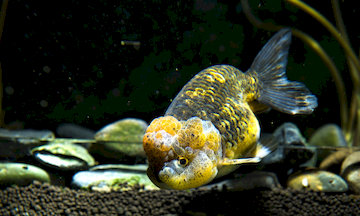 In ancient China, specifically during the Tang Dynasty, it was fashionable to raise various species of Asian carp in water gardens and ornamental fishponds.
In ancient China, specifically during the Tang Dynasty, it was fashionable to raise various species of Asian carp in water gardens and ornamental fishponds.
Due to natural genetic mutation (their tendency to generate in orange, red, and yellow color mutations), the silver carps produce, time to time, a yellowish orange color (gold) fish. People started to breed the gold variety rather than the silver variety because it was visually more attractive in ponds, which is what we now see today.
Goldfish Vision: What can they see?
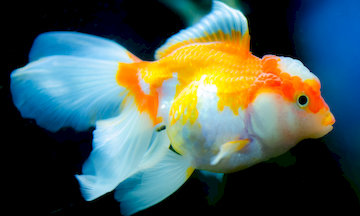 The goldfish is the most researched animal in laboratories studying the visual perception and cognition field. They are simple to train and easy to obtain. These fishes can perceive the same colors we do which makes them an ideal study for our visual perception. Not even other primates can do the same.
The goldfish is the most researched animal in laboratories studying the visual perception and cognition field. They are simple to train and easy to obtain. These fishes can perceive the same colors we do which makes them an ideal study for our visual perception. Not even other primates can do the same.
Just like human infants, juvenile goldfishes have a hard time seeing the color blue, but it does improve as they mature. What's unique about them though is that they have a fourth type of color receptor (humans only have three). This fourth receptor allows them to see ultraviolet light.
Goldfish Produce Alcohol
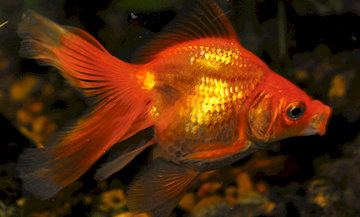 Goldfishes are also useful for understanding the effects of alcohol on our body and brain. The content of alcohol in their body approximates the alcohol concentration in the water where they swim. This means that you can estimate the drunkenness of the fish just by observing and knowing how much alcohol content is in the water.
Goldfishes are also useful for understanding the effects of alcohol on our body and brain. The content of alcohol in their body approximates the alcohol concentration in the water where they swim. This means that you can estimate the drunkenness of the fish just by observing and knowing how much alcohol content is in the water.
In a study by Ralph Ryback of Boston City Hospital- Massachusetts, goldfish swimming in a bourbon solution (whiskey) are more impaired than one swimming in vodka. Another unusual discovery worth noting is that the goldfish can produce alcohol inside their bodies! It is how they survive during the winter when fishponds are frozen at the surface, and there is little to no oxygen.
So... how many could you eat to get drunk? Approximately 16 000 goldfishes are equivalent to ~ 50 centilitre - 1/2 litre of beer (one pint). But we do not recommend it! A glass of cold beer is easier to swallow than a goldfish anyway.
Goldfish Myths and Facts Researches and References
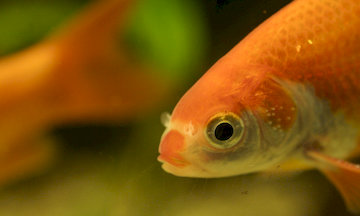 Images and Photos we use are from Wikipedia Commons and free images websites listed here, the Goldfish (Black & Yellow) is from Patrice Alsteen.
Images and Photos we use are from Wikipedia Commons and free images websites listed here, the Goldfish (Black & Yellow) is from Patrice Alsteen.
If you want to know more about Goldfish, take a look at some of our references below.
- Debunking Goldfish
- Goldfish myths and facts
- Common Goldfish
- 3 seconds memory
- Goldfish
- Various ethanol levels on Y-maze learning in the goldfish
- Goldfish can produce alcohol in their bodies
- Goldfish Myths
- Goldfish invasive species
- Do goldfish have teeth
- 4 Secrets Goldfish are hidding
- Common Goldfish
- Goldfish Myths Debunked
Speaking about Goldfish, did you know they were the most eaten fish in China centuries ago!
Last, but not Least
If you would like to receive interesting content like this in your email Inbox, subscribe to our newsletter.
In addition to our monthly newsletter, we will send you our weekly e-Bulletin with one fascinating topic, like today's article above. There will be no advertising nor sales pitch.
As always we want to thank Youtube and Wikipedia commons for some amazing images and/or videos on this page!
Thanks for reading, and if you wish, see you next week!
The Research and Media Team at Scotty's.
Disclaimer:
The views, ideas, and opinions expressed by the writers of Scotty's Media team do not necessarily reflect or represent the views, ideas, and opinions of the company, Scotty's Action Sports Network, Inc.
More Pictures About Goldfish Myth and Facts




